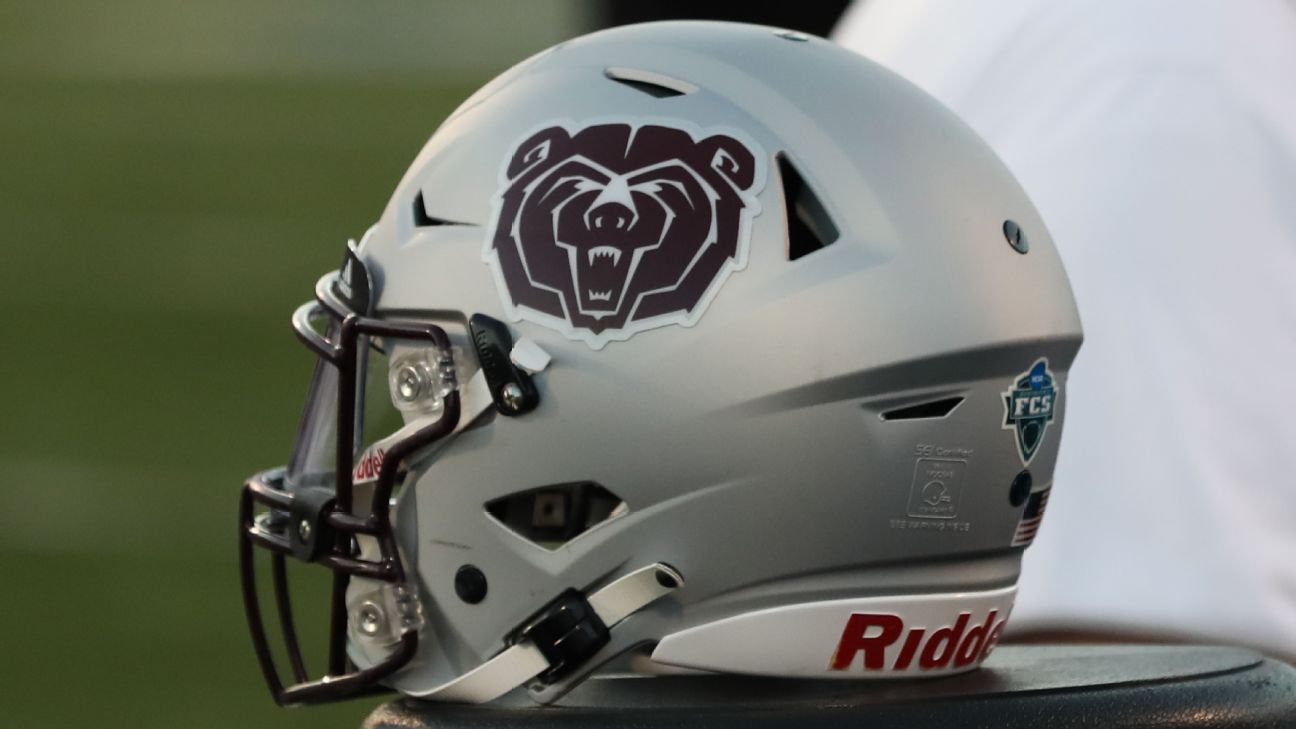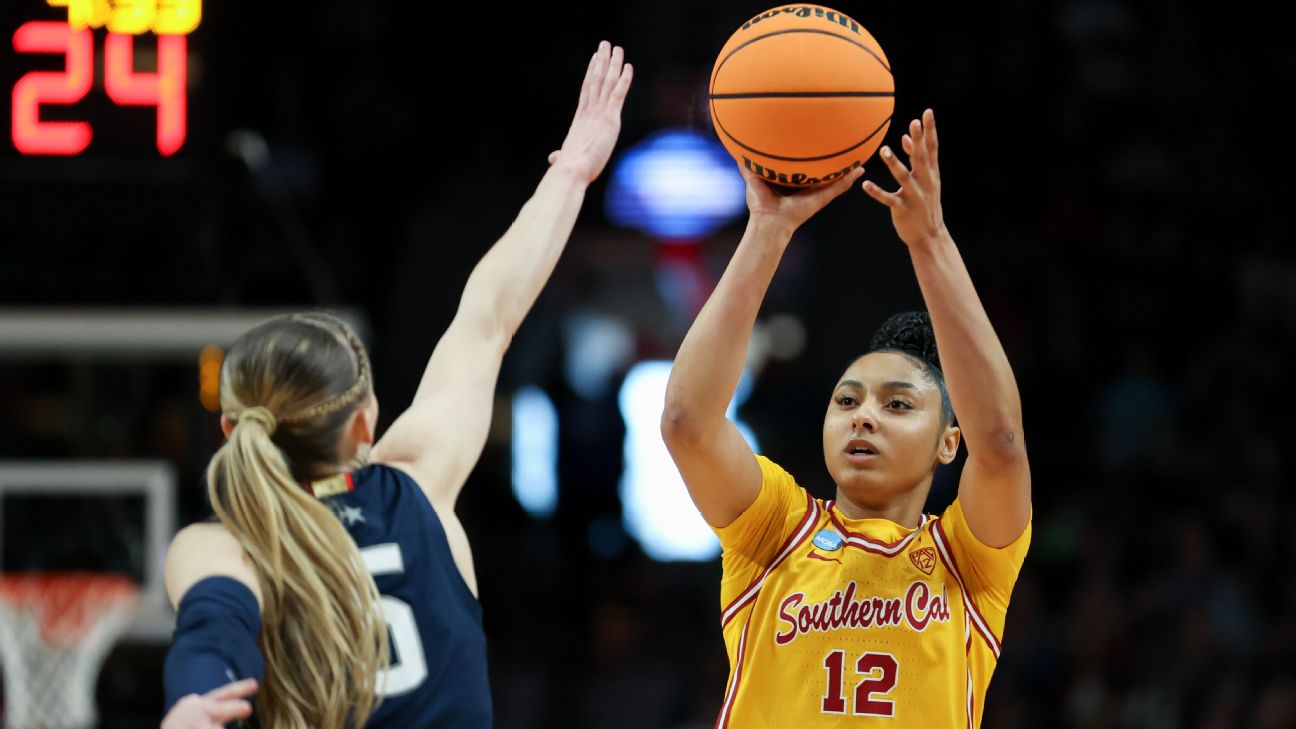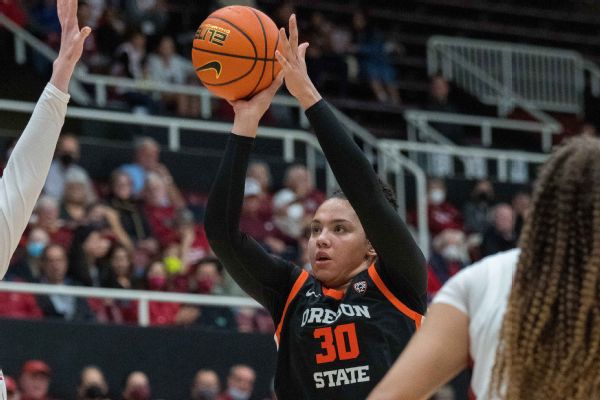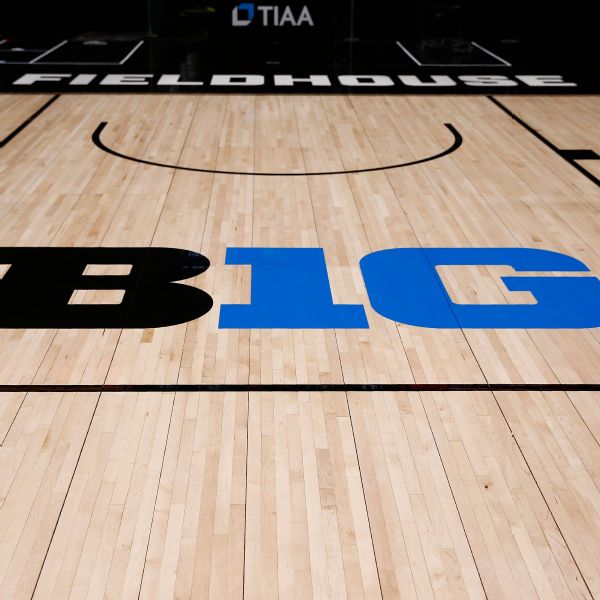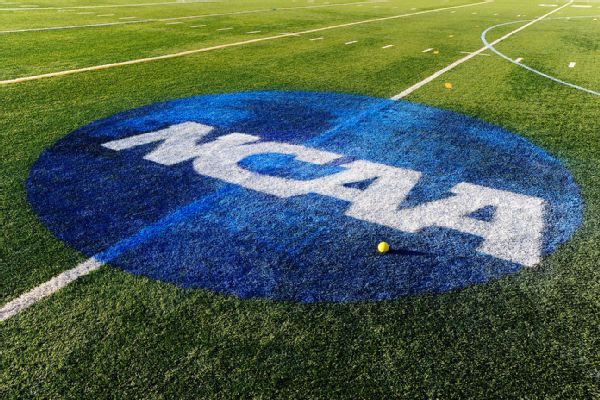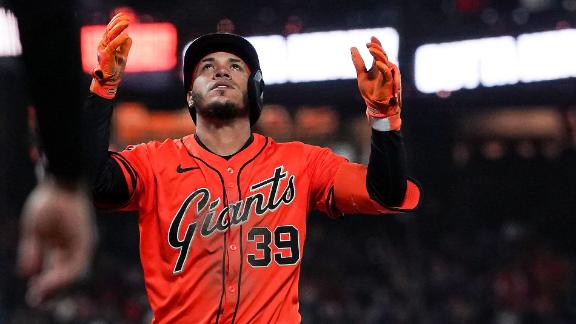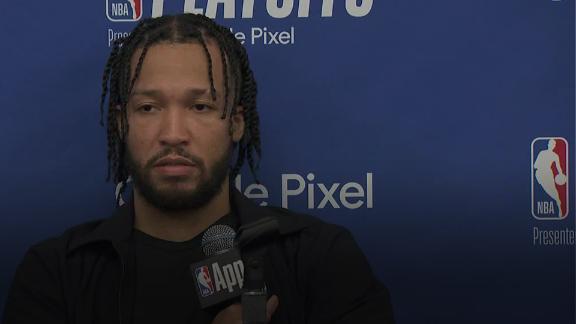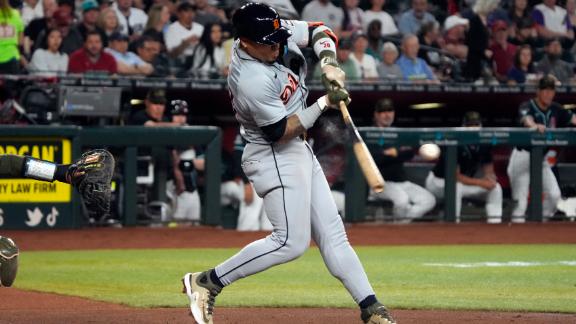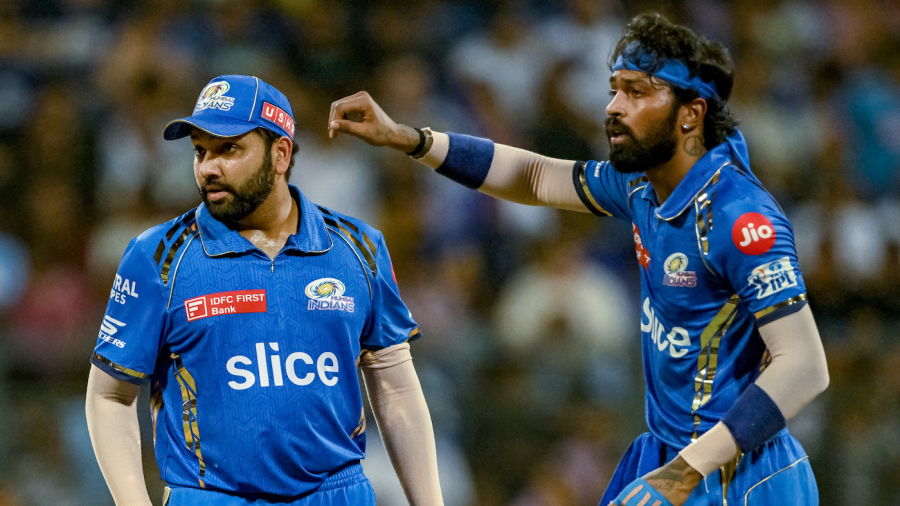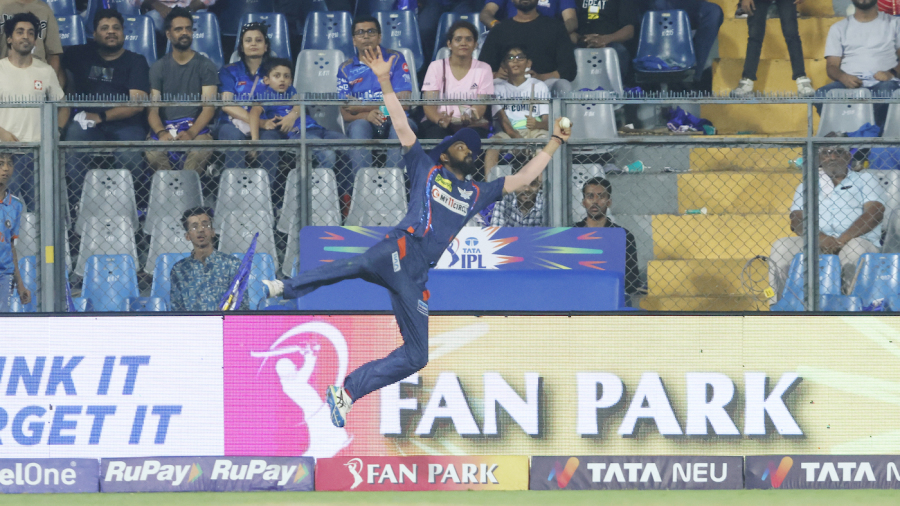![Mike_Trout_1BD [608x342]](https://a.espncdn.com/photo/2024/0502/r1327539_608x342_16-9.jpg)
Siakam helps Pacers beat Knicks 116-103 in Game 6 to send Eastern Conference semifinals to the limit
Baseball history is filled with "what-if?" stories about some of its greatest players. It's a genre into which Los Angeles Angels superstar Mike Trout can now be classified, thanks to his ever-extending run to terrible injury luck.
There are so many poignant titles in this category. What if Ted Williams, Joe DiMaggio, Willie Mays, Bob Feller and so many others had not lost years to military service? What if Dizzy Dean had not broken his toe in the 1937 All-Star Game? What if Tony Conigliaro had not been hit in the face by a pitch? And the biggest of all: What if big league baseball had never been segregated on the basis of race?
The higher the stakes, the more we remember these things that didn't happen, and the more we speculate about alternate realities. In Trout's case, he remains a work in progress. All we can say for sure at this point is that as the years pass, more and more of Trout's greatness is being left on the training table.
Now that Trout is down again, this time with knee surgery that at the very least will take him out of action into the summer, we have to ask: How will the injuries affect Trout's legacy?
It's about more than the Hall of FameAfter a stunning, unprecedented start to Trout's career, he had already piled up 47.7 bWAR by the end of 2016. That was the highest total of any player ever through an age-24 season. Only Ty Cobb (46.8) was within a win of Trout and the next-highest position player after Cobb was Mickey Mantle, a distant third at 41.3.
Trout was building a very strong case that he was on track to becoming the best player in baseball history. That is about as good as a legacy can get, and those are the stakes we are considering now. In other words, we are speculating to what extent Trout mirrors Roy Hobbs' failed quest from "The Natural" -- to be "the best there ever was in this game" -- because of all the time he has missed.
Trout could have been to MLB what 21st century legends LeBron James and Tom Brady have been to the NBA and NFL, respectively (minus all those championships, of course). Maybe he can still be that, but at some point, for that to happen, he's going to have to enjoy a career renaissance in the games-played column.
To say such a comparison is a high bar by which to consider a player's career is an understatement. By definition, it's the highest possible bar. We would not have this discussion about any other contemporary player. Only Trout has demonstrated the kind of sustained historical eliteness to enter this discussion. Now, though, it's a discussion that may be close to over.
This is not about Trout's eventual Hall of Fame candidacy. Trout is Cooperstown-bound and has been for a number of years.
He's already at 86.3 career bWAR. That ranks 50th all time, putting Trout in the 99.7th percentile of any player who has ever played. If somehow that's not enough career value, consider his peak. Trout's best five-year stretch (2012 to 2016, 47.3 bWAR) also ranks in the 99.7th percentile. His best 10-year stretch (2012 to 2021, 75.6 bWAR) is at 99.5.
Mike Trout was a first-ballot Hall of Famer pretty much as soon as he reached 10 years of service time, which is the minimum required for enshrinement. What has been slowed has been Trout's climb up the tiers of those whose plaques already reside in the Hall.
What has been lostTrout's season to date was uneven even before the injury. He was tied for the American League lead with 10 homers and started off like a house on fire for the first couple of weeks. He was mashing everything, OPSing well over 1.000 as of yore and had even re-introduced stolen bases into his arsenal. His six steals this season are already his most since 2019.
However, Trout was slumping badly when he got hurt. Over his past 13 games, he hit .128/.281/.319, dropping his season batting average to .220 and his career average under .300.
All this really means is that the early knee-jerk reactions suggesting that MVP Trout was back were premature. Still, during that slump, Trout's BABIP was a surreal .100, strongly suggesting that Lady Luck was wreaking havoc on his slash line. Increasingly, it appears that Lady Luck simply does not like Trout.
Another reason those early "Trout is back" takes might have been misguided is because there's an argument that he never left. That sentiment can be illustrated by one simple metric:
Trout's OPS+
2011 to 2016: 170 2017 to 2024: 176
That's right. On the basis of per-PA performance, Trout has been even better than he was through 2016, when he could have been reasonably considered to own the best career start of any player in history.
The latter stretch has still seen Trout play so much great baseball. Trout owns an MVP Award during that span (2019) and three other top-10 finishes in the balloting. His OPS+ and OPS are easily the best in the majors since 2017.
The problem? Again, a simple illustration:
Trout's games played
2011 to 2016: 811 (94% of possible games played, once he was called up for good in 2011)
2017 to 2024: 707 (59% of possible games played, if Trout does not play again in 2024)
Trout ranks 112th in games played since the start of the 2017 season. Obviously that ranking will continue to sink as long as he's on the shelf this time around. Paul Goldschmidt leads all players with 1,025 games during this span -- 318 more than Trout.
Because Trout's per-unit production has remained so steady, let's take a stab at what his career to date might look like with better health. How much better? Well, we won't set him at the Goldschmidt level, especially since Trout plays a more demanding position.
A better comp is Milwaukee's Christian Yelich. They are both outfielders who are around the same age, both have always featured power and speed and both have won MVP awards. Both are also currently on the IL. Yelich isn't an iron man, but he has played 917 games since 2017, ranking 23rd. He has appeared in 86.3% of possible games during that stretch, as opposed to 96.5% for Goldschmidt.
If we give Yelich's rate of 86.3% games played since 2017 to Trout, and assume Trout has his same rate of per-game production, his career numbers start moving him in the direction of best-ever status. If we consider Trout's 2024 as over for the sake of this exercise, that would work out to an extra 324 games on his tally -- exactly two full big league seasons.
These extra games would net him 96 more homers than his current total of 378, bringing him to 474. The record for most homers through age 32 is 553 by Alex Rodriguez, followed by Jimmie Foxx (500) and Albert Pujols (475). Trout would be fourth, rather than tied for 20th as he is now.
Trout would also have 335 more hits, putting him at 1,983. Among players in the 3,000-hit club who didn't have that many by age 32 are George Brett, Eddie Collins and Carl Yastrzemski.
Trout's bWAR total would be higher by an estimated 17.7 wins, putting him at 104 for his career. That would already rank 29th in history, rather than 50th. Only 32 players have ever reached 100.
That total of 104 bWAR would give Trout the fifth-most wins above replacement through his age-32 season. Ruth (123.5), Cobb and Rogers Hornsby (tied at 109.7) would be the only players ahead of him.
Would Trout already be considered as the consensus best ever? Maybe. Either way, the race would be on.
What could happen nextThe DH option gives Trout a late-career path that did not exist for earlier stars such as Ruth, Cobb or Mays. Even though Trout was moving so well before the injury, it's arguable that the Angels should ask a little less of him on the field.
There is no guarantee that Trout would take to such a change. He has DH'ed in 81 games during his career to date, not a huge sample but not an insignificant one. He has not been at his best in that role, slashing .214/.388/.358 with eight homers in 352 plate appearances. But Trout has a .961 OPS in five DH games this season and you'd hope he could adapt in a full-time role.
Otherwise, after what has happened year after year, it's hard to expect Trout to reach the 140 or so games per season he'd need to climb to the top of the career leaderboards. If we can imagine a scenario by which Trout gets back to 140 or more games, we can then examine what some greats of the game did from age 33 forward.
Barry Bonds hit 388 homers from age 33 on. Well, OK. Nobody wants to use Bonds as a comp, so let's move on to Hank Aaron with 313. Nelson Cruz, roughly a Trout contemporary, is next at 307. The Cruz number would get Trout to 685, which would be sixth all time. If Trout were already at 474, as suggested above, those 307 additional dingers would put him in a real position to make a run at Bonds' career mark.
In the hits column, the post-33 record is 2,104 by Pete Rose. (Glad there aren't any controversies among these leaderboards.) Trout isn't that kind of hitter, so maybe a better comp is Dave Winfield, who had 1,349. That would put Trout right on the doorstep of 3,000, though the league context of the current strikeout era would certainly work against him. If he were already at our adjusted figure of 1,983, he'd be a good bet to get to 3,000.
As for bWAR, the post-33 record is Bonds' 71. If Trout were to match that, it would push him to 157.3 for his career. That total would rank fifth all time, behind Ruth, Walter Johnson, Cy Young and Bonds -- just ahead of Mays.
That puts Trout in the best-ever conversation, and many would anoint him simply because he is a 21st century athlete. Alas, if he were already at the 104 bWAR as we re-calculated given better injury luck, that would move him to 175, second all time. It's still short of Ruth (182.6) but really close.
These infernal injuries have already cost Trout so much and, in turn, all of us who love baseball history. Whatever happens from here, Trout will be considered among the all-time greats.
But how great? As the injuries keep piling up, we're faced with another "what-if?" surrounding one of baseball's immortals.


